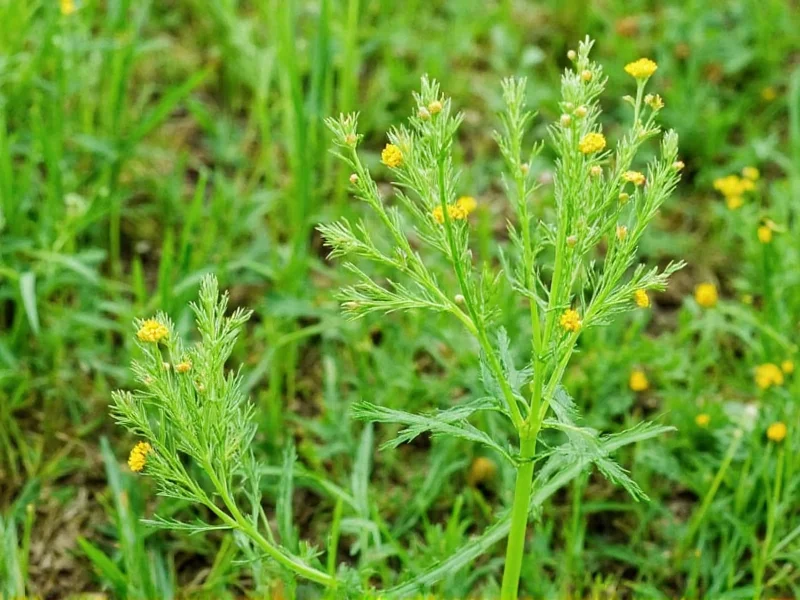When you're standing in the spice aisle or preparing a recipe that calls for dill, confusion between dill seed and dill weed is common. Both originate from the dill plant, but they're harvested at different stages and serve unique purposes in cooking. Let's explore the key differences that every home cook should know.
Botanical Origins: Same Plant, Different Parts
The dill plant (Anethum graveolens) produces both the delicate fronds we call dill weed and the small oval seeds that mature later in the plant's lifecycle. Dill weed refers specifically to the fresh or dried leaves and stems, while dill seed comes from the plant's mature fruit after flowering.
Understanding the difference between dill seed and dill weed starts with recognizing their growth stages. Dill weed is harvested when the plant is young and actively growing, typically before flowering. Dill seed develops after the plant flowers and the seeds mature, usually in late summer.
Visual and Textural Differences
Visually, these two ingredients couldn't be more different. Dill weed consists of fine, feathery green leaves that resemble fennel. Fresh dill weed has a vibrant green color and delicate texture, while dried dill weed appears as crumbled green flakes.
Dill seed, by contrast, are small (2-4mm), oval-shaped seeds with a light brown color and ridged surface. They're harder and more substantial than the delicate leaves of dill weed.
| Characteristic | Dill Weed | Dill Seed |
|---|---|---|
| Plant Part | Leaves and stems | Mature seeds |
| Appearance | Feathery green fronds | Small oval brown seeds |
| Flavor Profile | Delicate, grassy, subtle anise | Stronger, earthy, citrusy, slightly bitter |
| Best Used In | Fresh applications, finishing dishes | Pickling, baking, hearty dishes |
| Shelf Life (dried) | 6-12 months | 2-3 years |
Flavor Comparison: Why Substitution Matters
The flavor difference between these two ingredients explains why they're not interchangeable in recipes. Dill weed vs dill seed in recipes creates dramatically different results:
- Dill weed offers a light, fresh, slightly sweet flavor with subtle anise notes. It's delicate enough that heat diminishes its flavor, making it ideal for finishing dishes rather than cooking.
- Dill seed has a stronger, more pungent flavor with earthy, citrusy, and slightly bitter notes. The flavor intensifies when cooked, making it suitable for longer cooking processes.
When exploring how to use dill seed instead of dill weed, remember that dill seed is significantly more potent. As a general rule, 1 teaspoon of dill seed equals approximately 1 tablespoon of fresh dill weed, but the flavor profile won't be identical.
Culinary Applications: When to Use Each
Understanding which to use can make or break your dish. Here's when to reach for each:
Best Uses for Dill Weed
- Finishing soups and sauces (added at the end of cooking)
- Fresh salads and salad dressings
- Dips like tzatziki or ranch dressing
- Seafood dishes, particularly salmon
- Scrambled eggs or omelets
- Cucumber salads
Best Uses for Dill Seed
- Pickling cucumbers and other vegetables
- Bread recipes, particularly rye or sourdough
- Stews and hearty soups (added early in cooking)
- Meat rubs for pork or lamb
- Homemade mustards
- Cheese spreads and pâtés
Substitution Guidance: Can You Swap Them?
While not ideal, substitutions are sometimes necessary. If you're wondering can I substitute dill seed for dill weed, the answer depends on the recipe:
- Dill seed for dill weed: Use 1/3 teaspoon dill seed for every 1 tablespoon fresh dill weed. Best for cooked dishes where the stronger flavor can mellow.
- Dill weed for dill seed: Use 1 tablespoon fresh dill weed for every 1 teaspoon dill seed. Only works in recipes where the delicate flavor is acceptable.
For the dill seed and dill weed substitution ratio, remember that dill seed is more concentrated. In pickling recipes, dill seed is nearly irreplaceable, while in fresh applications, dill weed has no true substitute.
Storage Tips for Maximum Freshness
Proper storage extends the shelf life of both ingredients:
- Fresh dill weed: Treat like fresh flowers. Trim stems, place in water, cover loosely with a plastic bag, and refrigerate. Use within 5-7 days.
- Dried dill weed: Store in an airtight container away from light and heat. Loses potency after 6-12 months.
- Dill seed: Keep in a cool, dark place in an airtight container. Maintains flavor for 2-3 years.
Common Confusions Explained
The confusion between these ingredients stems from several factors:
- Naming inconsistency: Some regions use "dill" to refer to the seeds, while others mean the leaves.
- Similar packaging: Grocery stores often place them near each other in the spice aisle.
- Same plant origin: People assume different names mean the same thing.
- Recipe ambiguity: Some recipes simply say "dill" without specifying which form.
When reading recipes, pay attention to context. If it mentions "fresh dill," it means dill weed. If it specifies "seeds" or appears in pickling instructions, it's dill seed. Understanding what is dill weed made from helps clarify why these are distinct ingredients despite sharing a name.
Practical Tips for Home Cooks
To avoid recipe mishaps:
- Read the entire recipe before shopping to determine which form you need
- When in doubt, check the recipe's origin—European recipes often mean dill seed when saying "dill"
- Grow your own dill to experience both forms firsthand
- Label your spice containers clearly to prevent confusion











 浙公网安备
33010002000092号
浙公网安备
33010002000092号 浙B2-20120091-4
浙B2-20120091-4